If you’re anything like us, you might be wondering, “Is it weird to go on a slum tour in Mumbai?” We had the same, but went anyway. Here’s what we thought about going on the Dharavi Slum Tour in Mumbai.
Slum tour.
Those two words make me uncomfortable. Paying money to see how “poor people” live seems like the epitome of privilege. In my mind, the notion of slum tours ranks up there with “authentic village experience tours” when it comes to cringe-worthy tourist outings.
… yet we spent three hours on a Dharavi Slum Tour. Why?
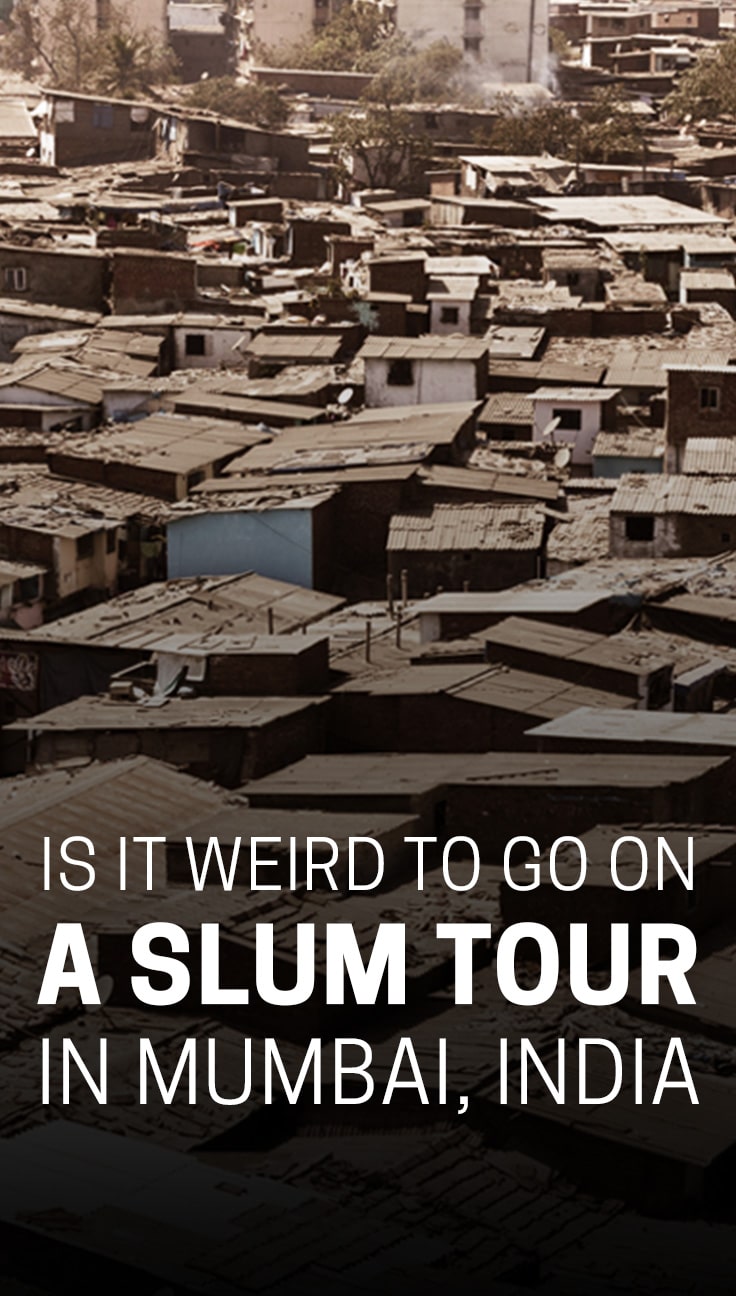
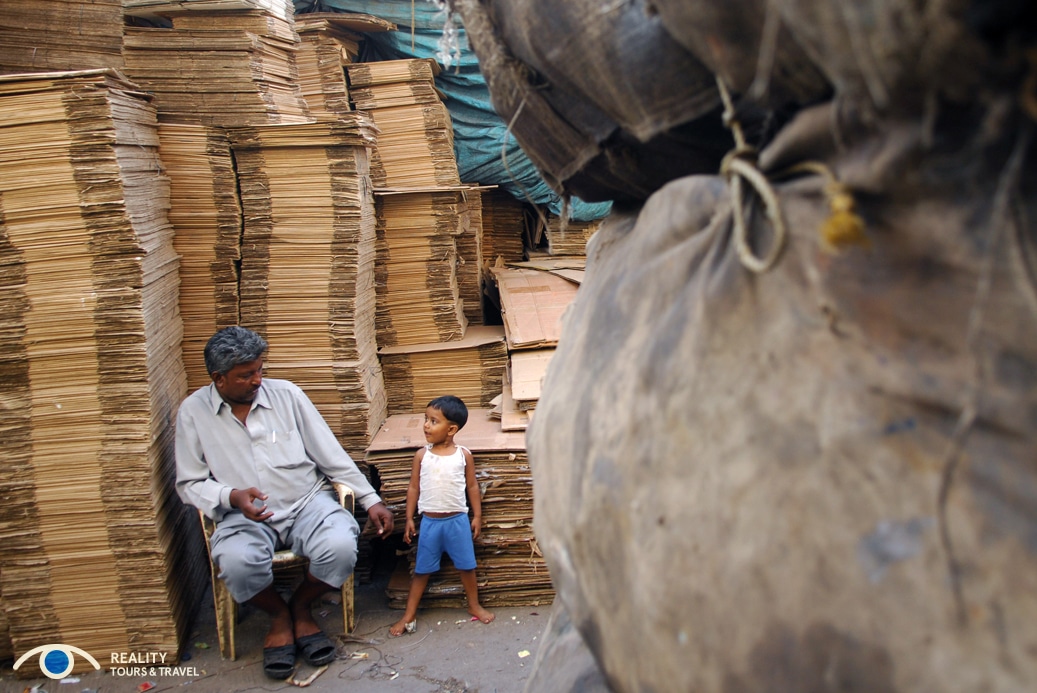
Cardboard recycling in Dharavi. Photo by Reality Tours & Travel.
Why do we want to do this?
Sebastiaan and I debated the ethics of going on a slum tour for a long while in the days leading up to it. We could see the pros and cons but mostly felt discomfort with the idea. Why do we want to see what these people live like? Do we really want to encourage poverty as a tourist attraction?
The answer to the latter is no, of course, but what about the former?
Ultimately, it boils down to curiosity. Curiosity is the same reason we were drawn to Afghanistan, that Iran’s closed society called to us. Filthy rich or painfully impoverished, we want to see what people live like all around the world. It’s one of the reasons we travel.
Still, the thought was uncomfortable.
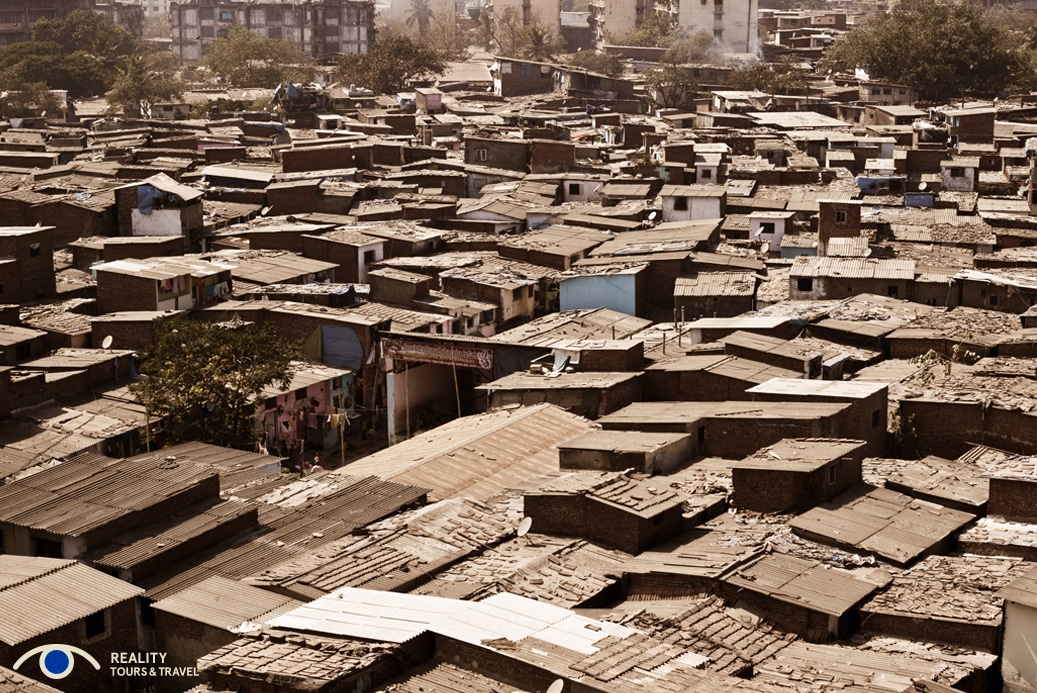
Dharavi slum from above. Photo by Reality Tours & Travel.
Is there a right way to do this?
Dharavi is Mumbai’s largest slum (and the third-largest in the world) made famous by the film Slumdog Millionaire. Around one million people live there, and at about 280,000 people per square kilometer, it’s one of the most densely populated areas on earth. I was set on visiting but conflicted about how best to do so.
Firstly, I was afraid of treating people like zoo animals. It sounds silly, but many tourists are guilty of this, and don’t even realize it. But we didn’t know what to expect from the slum — would it be strange for us to walk around there by ourselves? I’d heard of travelers visiting other slums independently, but what about in Dharavi? Would it be obnoxious?
We also aim to be responsible travelers. Supporting the local economy is always one of our highest priorities, but how could we best do so in Dharavi? We didn’t want to count on buying anything from them—what’s the point in getting souvenirs if you don’t have a home to put them in?—and simply handing out money or items to people is a big no-no.
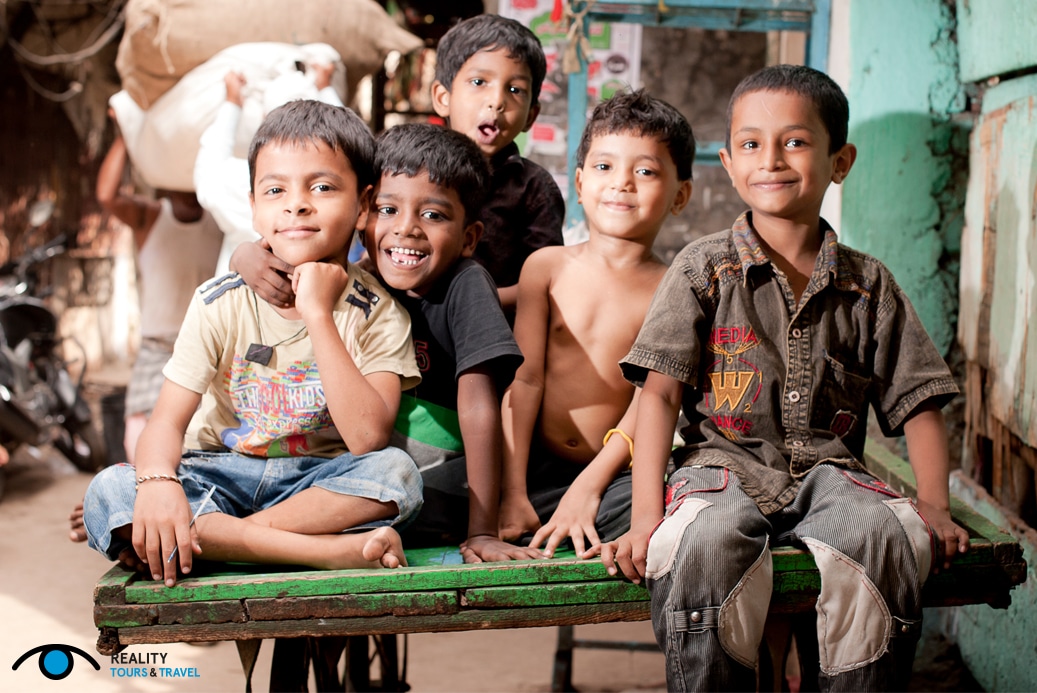
Photo by Reality Tours & Travel
I did some research into tour options, and learned of Reality Tours, the go-to “responsible” NGO offering Dharavi Slum Tours. The company states that 80% of their profits from the tour are reinvested into the community, primarily into a school they run.
Reviews were glowing, and the NGO has received plenty of accolades and recommendations. Still, we hesitated. Are tours really the best way to see the slum in Mumbai? Better than walking around ourselves? And who is Reality Tours, anyway?
True to my MO, I didn’t make up my mind until the last minute. We were flopped on a bed, waffling about deciding what to do for the day, when I saw there was a tour opening in several hours. Fuck it, I thought, let’s just see. The Dharavi slum tour starts at 900 Rs per person.
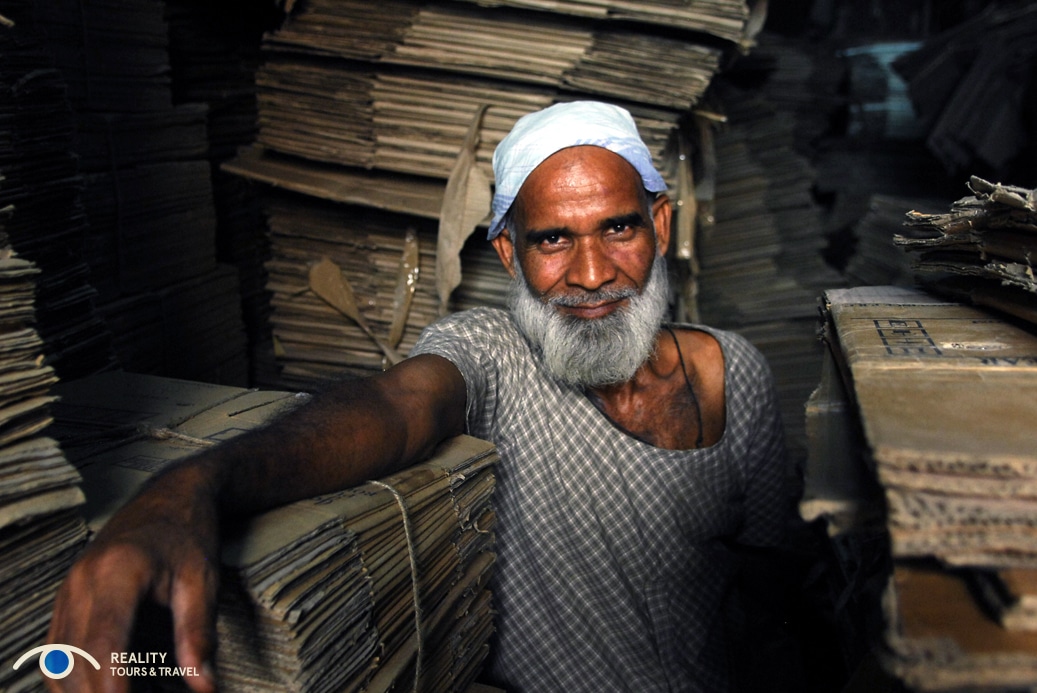
Photo by Reality Tours & Travel
A review of Reality Tours’ Dharavi slum tour
I’m certainly not glowing, but I did find the tour interesting. That’s saying something, given my disdain for tours — I’m usually the cynical one in the back perpetually eyeing the clock.
Organization-wise, I have no complaints. The guide, a native of another Mumbai slum, spoke excellent English and answered all questions. There’s a strict no-camera policy on the tour to protect the privacy of the residents (and prevent things from turning into a zoo).
I scanned through Reality Gives’ annual report, and their numbers seem to make sense, though we didn’t actually enter the school they run, nor meet any students. Perhaps suspicious, perhaps sensible—don’t want to disrupt school in session.
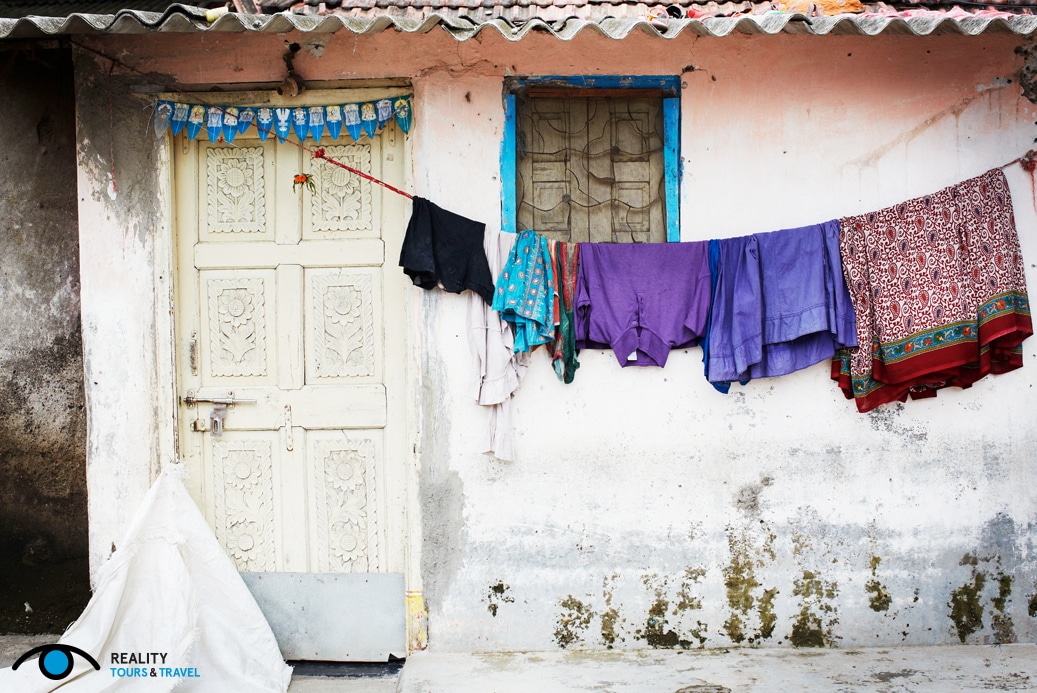
Photo by Reality Tours & Travel
The tour took us through an area of Dharavi much more developed than one would expect. Many pathways were tidy, and smelled better than much of Mumbai. Machines and workers hummed industriously, producing all kinds of materials from suitcases to pappadums. We learned how Mumbai’s plastic recycling is all done in Dharavi, alongside many other businesses. Together all of the businesses within Dharavi’s depths rake in a whopping $665 million each year. Heck, there’s even wifi.
It was worlds apart from what one would expect from slum life, but I think that’s the point. Reality’s mission is clearly to show the positive aspects of slum life, and build respect for the community. It’s fair—everyone deserves a chance to share the bright side of their story—but is it too optimistic?
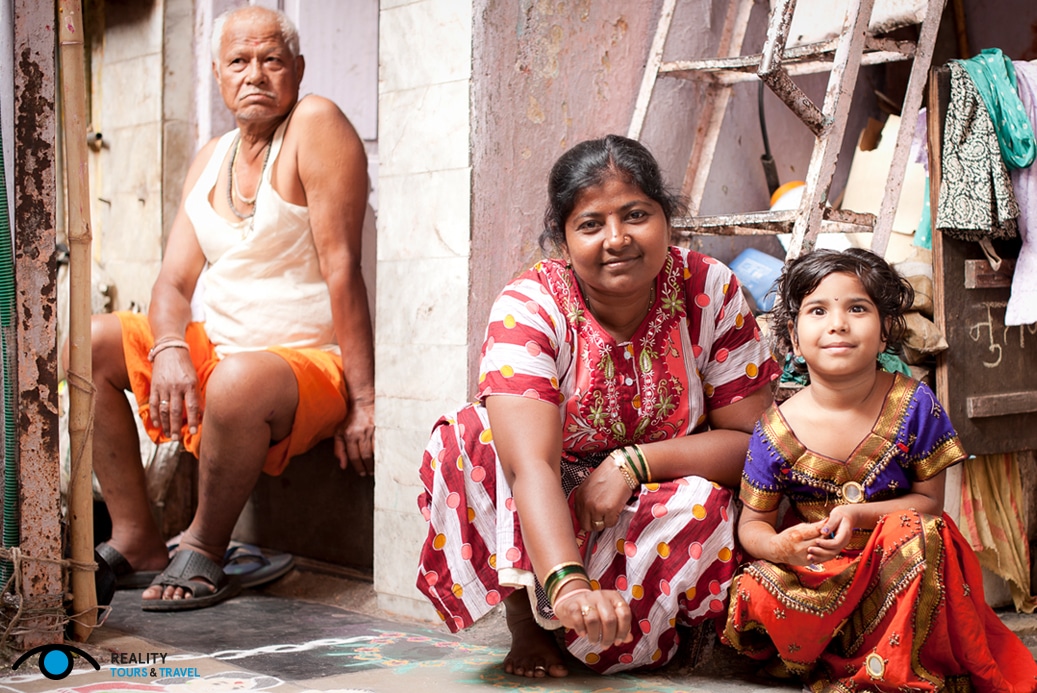
Photo by Reality Tours & Travel
Is this reality?
Dharavi is, as the guide said, a “5 star slum”, and I suspect we saw the most polished aspects of it. We saw factories and bakeries, cricket pitches and paid toilets, but there was no mention of issues such as women’s safety, child labor, or issues with tuberculosis and cholera.
Leatherworkers toiled away before us, working for about 200 rupees each day, before we were taken into what felt very much like a gift shop, filled with bags and wallets going for thousands of rupees (eagerly snapped up by several tour members).
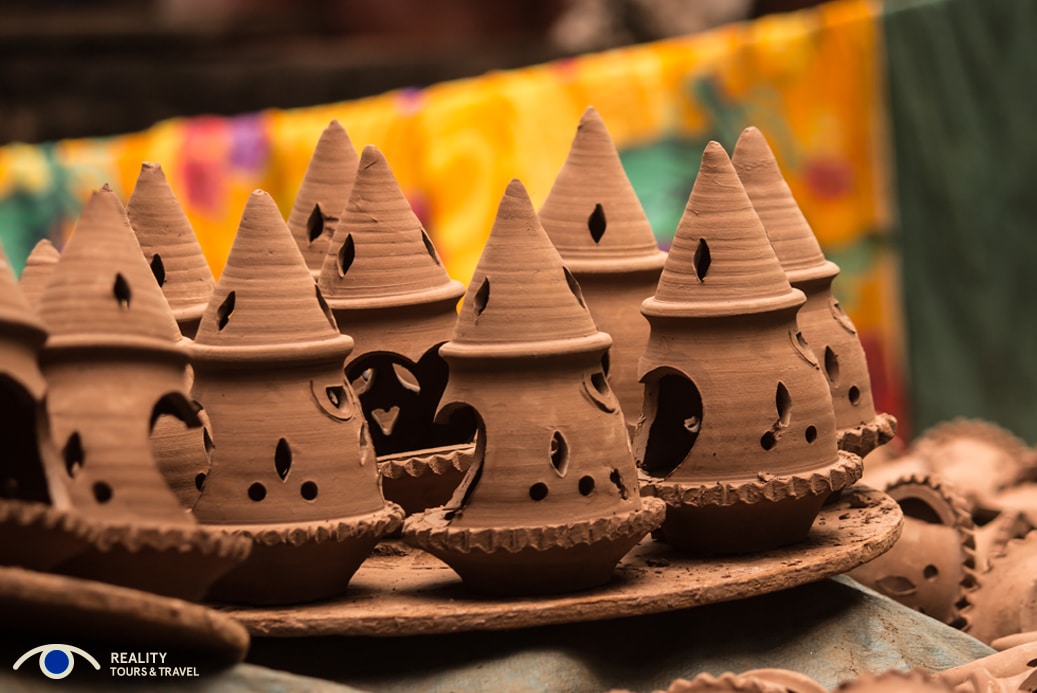
Photo by Reality Tours & Travel
The tour ends in a clean—if smoky— pottery factory owned by the oldest Dharavi dwellers. They’re wealthy enough to live in a house elsewhere in Mumbai, but choose to stay in the slum close to their business. Is this really how most people in slums live?
I’m not saying there needs to be more focus on misery and woe. Rather, if you do attend the tour, stop and really think about what you’re seeing.
Dharavi is not a seething mass of squalor the films make it out to be, but nor is it necessarily representative of slum life throughout India and beyond. “Oh, slum life isn’t so bad,” is not the point the tour is trying to make, nor the opinion you should walk away with.
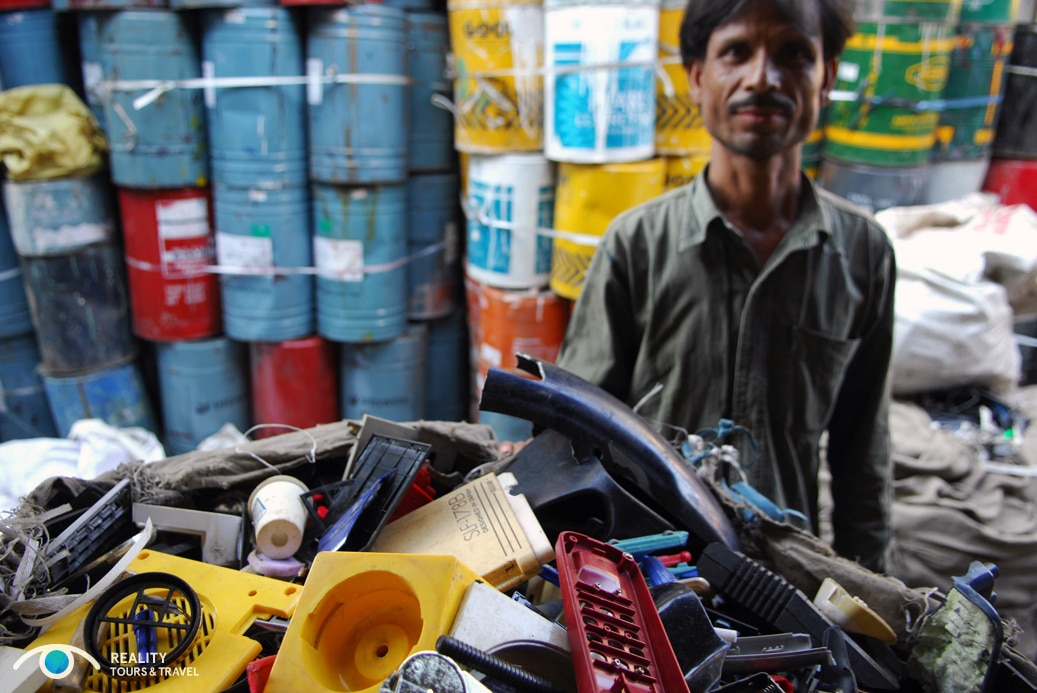
Photo by Reality Tours & Travel
So is it weird to go on a slum tour in Mumbai?
Ultimately, it’s up to you. I went, but I’m still uncomfortable with the idea, and would be understanding if you don’t want to go yourself. There are pros and cons to visiting Dharavi (or other slums covered by “responsible” NGOs) with a tour. Read through, and decide for yourself.
Pros:
- Going with a tour run by an NGO is a way to financially support the community in a responsible way, unlike blindly donating materials or giving to beggars.
- Dharavi’s alleys are a maze, and navigating them could be a challenge. There are also reports of lone foreigners being mugged in its lanes.
- Female travelers will be safer as part of a tour. It would be unconventional for lone foreign females to walk through Dharavi.
Cons:
- You’re inevitably making poverty an official tourist attraction, AKA “poverty porn”.
- Encouraging the notion of slum tourism as a way to make money, which inevitably leads to people with bad intentions doing the same in a less responsible way.
- At 900 Rs+ per person, it’s costly for budget travelers.
Still not sure about going on a slum tour, and want more information? Check out Sid the Wanderer’s post on a walk inside India’s largest slum.
If you’re interested in joining a Dharavi Slum Tour, you can book one here!
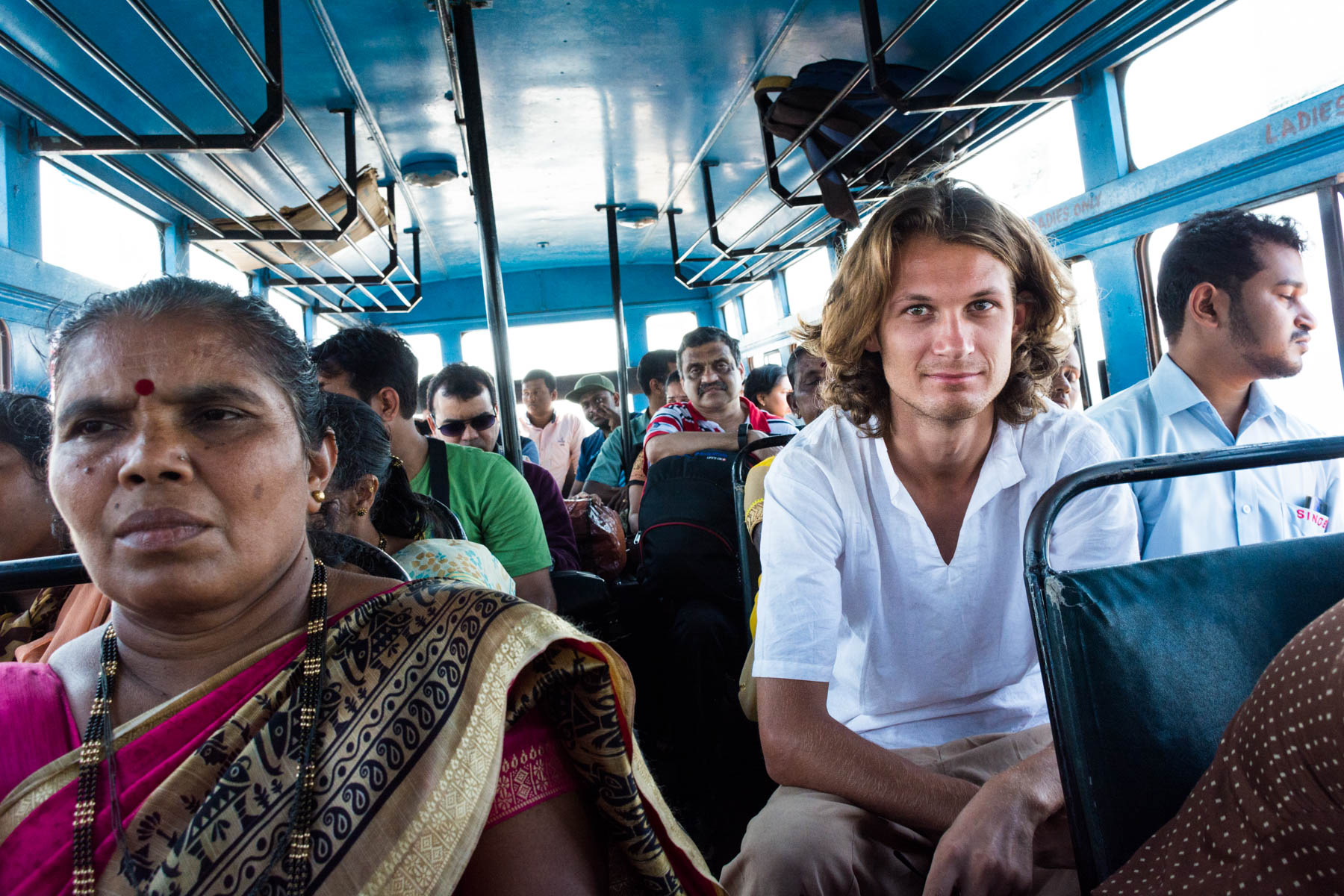
Alternatives to going on the Dharavi Slum Tour in Mumbai
If touring through slums isn’t your thing, there are plenty of other ways to interact with Indians from all walks of life:
- Ride in the cheapest train classes (sleeper or sitting). People love to talk on trains!
- Same goes for buses. Take the regular government buses instead of the nicer private options, and be open to conversation.
- Hang out in cheap tea shops or by street stalls. The further from tourist areas, the better.
- Talk to kids on the street. You never know where they’ll lead you, and it warms you up to their family members if they’re watching from nearby.
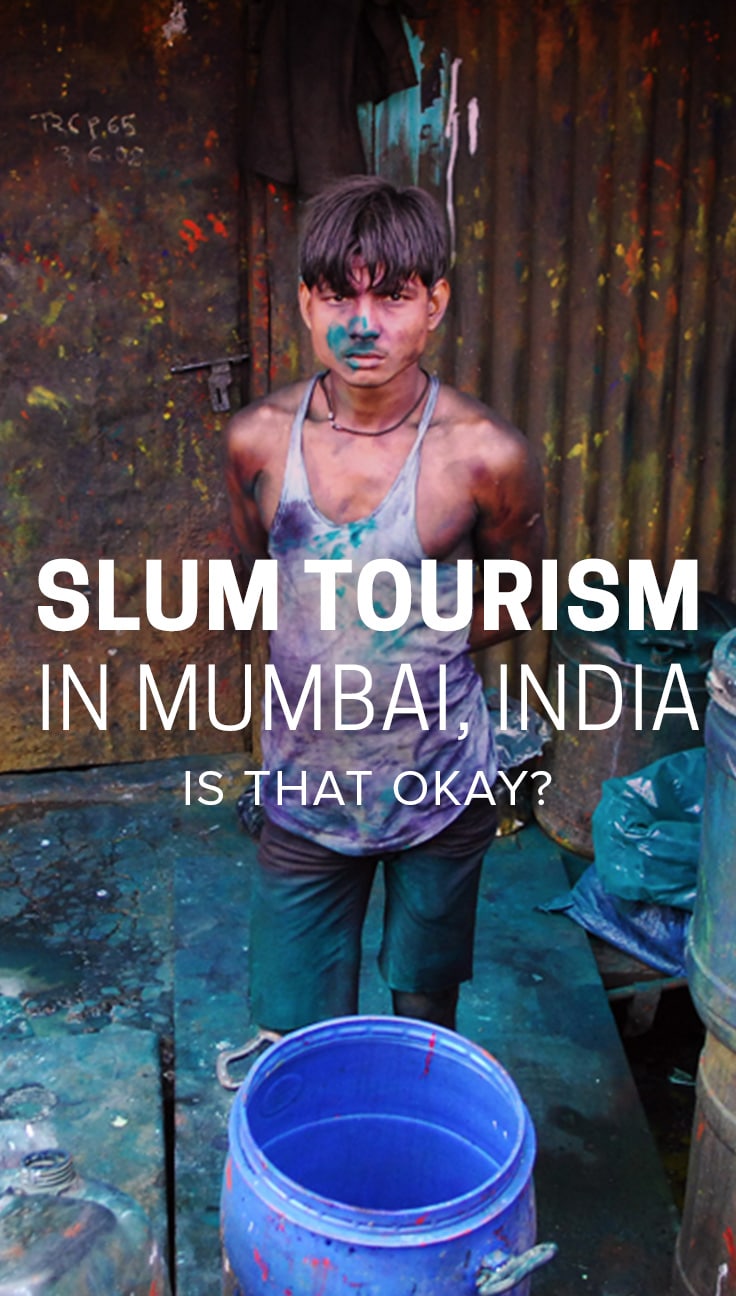
Interested in more on responsible travel in India? Here’s why you shouldn’t give pens to children in India.
Hooray for transparency. We weren’t sponsored to do this review and went on this tour out of our own interest. The views expressed here are our own. This post may contain affiliate links. If you purchase anything through these links, we get a small percentage of the sale, at no extra cost to you. This allows us to keep the site running.
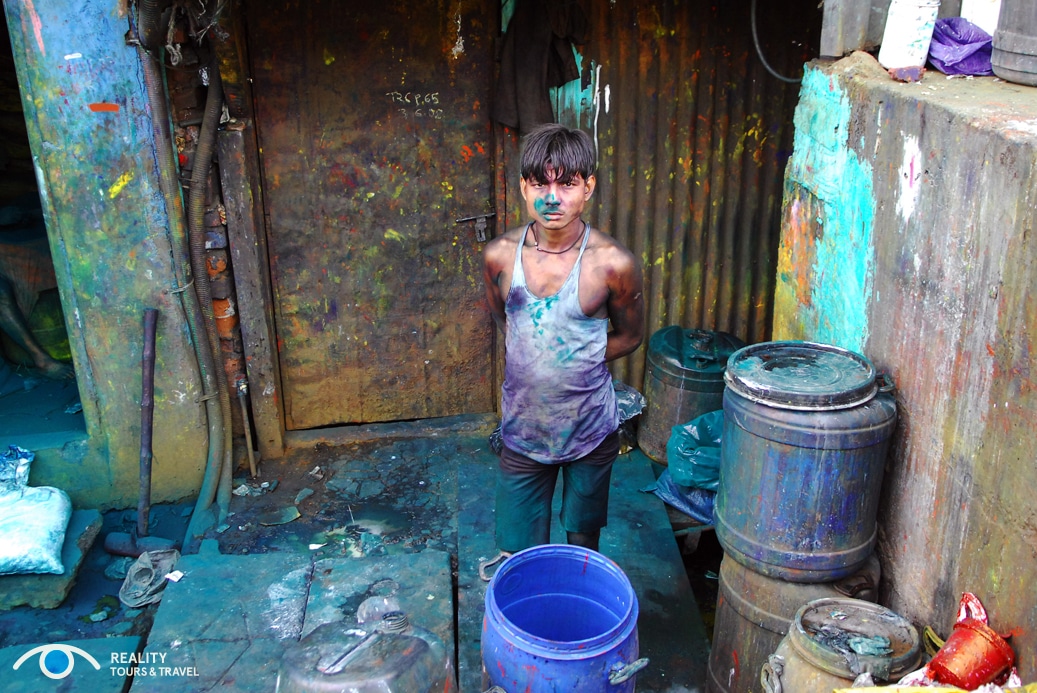


Thank you for writing about this topic!
I identify with a lot of this Alex, I went on the Reality Travel & Tours trip to Dharavi too, via Visit.org, and was really ‘on-the-fence’ about whether to go or not. The arguments about the benefits and negative effects of “slum tourism” are so divisive. In the end I decided that I couldn’t criticise or form an opinion on what I hadn’t experienced and so I went.
I was impressed with Reality Tours & Travel – they seemed a well run organisation and seeing the work and centres that they are building with the proceeds is inspiring. What struck me most of all is the pride that people had in Dharavi – my guide lived there and his enthusiasm for living there was contagious. In addition to walking around the Industrial area we also had lunch with a family.
Personally I think key points are as follows 1) No photography was allowed (reduces ‘zoo’ aspect), 2) most of the money is reinvested into Dharavi, and most importantly for me at least 3) Dharavi is not a typical slum. There was hardly any walking around of the residential area which could encroach on peoples’ privacy. Dharavi is also really well off and even expensive to live in compared to any other Mumbai (or Indian) slum and has great infrastructure in comparison (although there are still big issues such as waste). Which makes it a lot more appropriate to visit with an NGO than other slums in my opinion.
I would not go and walk around Dharavi on my own or go with a company that was not set up as an NGO and reinvesting into the economy, and could show what they are doing to mitigate negative impact. What made me sad was to see other groups of tourists walking around taking pictures, who were not with our group, so clearly the same scrupulous standards are not applied by all.
I’m glad that I saw the work that Reality are doing. I would recommend going with them to anyone.
You phrased all of the arguments so much more eloquently than I did—can you just rewrite my article? 😉
But yes, I was in the same mindset. It’s not right to criticize what we don’t know or haven’t experienced ourselves. Luckily, with Reality’s case, it seems as though the decision to go wasn’t such a poor one.
Thanks so much for writing this! I also still feel really on the fence about this. The slums have massive industries and are almost like mini-cities in and of themselves, but I too wouldn’t want to feel like I was paying to go have a look at people who are less privileged. Overall I think they sound like a good organization, but the entire concept is a bit gray. Thanks for sharing!
Yep, that’s precisely the problem—though we might approach the tour because we’re interested in learning, we’re ultimately paying to look at poverty. Urgh.
This was very interesting. I have always been pretty against slum tours on principal, though I have to admit like you I would be extremely curious. It sounds like if you’re going to do it, this experience was better than many others out there. Thanks for sharing your thoughts!
Curiosity kills the cat, right? Yeah, it’s important to judge on a case-by-case basis—there are a lot of very shady slum tours in operation in cities around the world. This one seemed to be decently run, but it’s still a gray when it comes to morality…
This is a really interesting article. I’m glad to hear they have a no camera policy. To me there is nothing more disrespectful than to invade community space to take photos and then leave. I also think it’s good that they didn’t bring you into the school. As a teacher, I always think how disruptive it must be to have tour groups visiting a school everyday. To me it shows a disregard for the children’s education but I suppose often the schools need the money. Thanks for writing such an honest and informative post.
Yes, it seemed to be decently organized, and thoughtful regarding the residents’ daily life. At least the NGO is operating the tour sensibly. Thanks for reading!
I went on a so called slum tour in Delhi and I had similar feelings. THe NGO that organised it was doing some excellent work in the area but I had my problems with them selling their tour as a slum tour. To me, this area didn’t look like a slum. THe tour was interesting, because it is an old neighbourhood built around a sufi shrine. So there was lots to see and know that you would not get to know about if we would have walked around on my own. And that was maybe my point. THere was enough history to attract visitors to come here. There was no need to use poverty as a selling point.
Curious, which area of Delhi was it in? As for selling it as a slum tour… alas, we can’t deny that’s probably much more attention grabbing and interesting than “Old Delhi neighborhood history tour”. Perhaps it’s up to us as tourists to question why selling it that way is so much more effective…
It was in Nizamuddin. I mentioned it in my blog post about Delhi, but on purpose did not call it a slum tour. https://www.backpackadventures.org/2015/11/01/things-love-delhi/
Interesting post. I’ve interacted with many people living in the slums since I’ve been staying for a long time in a local area. I don’t think I would take a tour, but I do advise everyone visiting India to connect to different local people to know their stories and experience the social reality in India. As you mentioned, this slum of Dharavi in Mumbai (as in many other cities) is more developed than anyone would expect to. I think the impression of massive poverty gives this huge social gap. Every day I was going to the office where people owned several cars and few even more than one flat (which comes at exorbitant prices in Delhi). Afterward I was going home and buying vegetables from a sabji walla who was pulling his cart from the early morning till late evening. We were doing a small talk every now and then as I knew about his family and he knew about my office. He always cared to return 5-10 INR the other day if he didn’t have at that moment. That was a huge contrast with the self-confident merchants who double-triple prices for the white face. I’ve seen many kids under 10 years working and earning money and it’s such a different reality as there are also children asking for the latest iPhone from their daddies, because the current they have is out of trend. The fact that all these coexist together in daily life give a strong feeling of injustice/vulnerability/hopelessness. I think the social despair you were expecting in slums you will find in the local villages of the East and Central India. I’ve visited few because my local neighbor invited me to her hometown in the east of Uttar Pradesh. There are no contrasts anymore. Just people who totally depend on the land and the crops. This is the main factor of the “wealth” there. I do think that people, especially from the west need to see it with their own eyes. TV news don’t look that impressive, but when you talk to real people who belong to socially vulnerable stratum something changes about your life perception…
Indeed, it’s important to connect with people of all backgrounds regardless of where you go! Your story of the sabji wallah is proof; the people at the bottom of the food chain often have larger hearts and make better company than those sitting at the top. Unfortunately, connecting is much easier to do when you’re living in one place —transitory people only have a short window of time to meet people, which can make real connection difficult.
We find it frustrating, more than anything, to see these stark contrasts in India. It’s visible wherever we go, and disturbing in how it’s an accepted (or ignored?) part of society. There seems to be an increase in the possibility of upward mobility in this day and age, but we also hear plenty of stories of people being disregarded or turned away because of their background or where they live…
The most powerful post I’ve read in a long time, maybe ever! As I was reading this, I felt like I wasn’t going to look at travel the same anymore; that it’s not just for taking goofy selfies in front of the Eiffel tower, it’s also an insight into seeing how others live. Often others, if not most, people around the world surprising live on less than what the average Australian or American lives on, and have lower living standards than even people from the western world living on a pension. That stuns me massively. But this post really alerted me to the temptation I am facing of seeing poverty porn. Why? I think poverty is just something that is in your face wherever you go when you least expect it – right there on the streets. And it’s anything but arousing, entertaining or funny – it’s actually really confronting, and sometimes scary.
Travel is far, far more than just silly selfies (in our humble opinions), though there’s always a time and place for those, too! The more we travel, the more we realize it’s people and their cultures that leave the most lasting impressions. We aim to interact with people of all backgrounds, though the language barrier makes that difficult sometimes.
Poverty is indeed in our faces wherever we go—what’s even more disturbing is how well conditioned we are to just avoid it, or ignore it. There are homeless people sleeping on the streets of the US and Australia, just as there are homeless people on the streets of India. Gaping at it like it’s an attraction is never a good thing, but being open to it and aware of it is the first step towards finding solutions.
The hardest part is not knowing what the h*ll to do about it. Handing them cash is meaningless. But maybe hunting down a homeless shelter, and where appropriate, walking them to it and letting them get cared for there? Idk! When I saw them everywhere in Sydney, I had no idea what to do! I can’t just pray, ‘Please wipe out all homelessness in the world’ as that is not how prayer works, so I don’t know how to pray! But what will a little cash do? Go in no time and the homelessness continues.
#IFeelPowerless
This is exactly how I felt doing a similar tour in South Africa. I love your alternative ideas. Great post.
Thanks! We always aim to offer solutions or alternatives when we criticize things.
Even though I was raised in Mumbai, I’ve not actually taken the tour – I guess most locals experience it through the alternate ideas that you’ve suggested here! I can totally relate to the dilemma as my husband and I went through a similar discussion when we were in Johannesburg, we ended not going but I do agree that every experience is an addition to some kind of learning. Interesting post and an uncommon topic for sure 🙂
Would it be strange for a Mumbai local to wander through Dharavi? We imagine it would be more engaging since you can actually communicate with the people there, unlike us clueless foreigners 😉
Since you bring it up, I have to ask: how did you get the pictures of people? Did you stop the locals on the tour and ask to take their picture? I wonder if they know that the tour is a “slum tour” and feel insulted, or if they appreciate that people want to see how they live to try to help them? I do love that the tour proceeds get put into helping the city! Interesting perspective, though, thank you for sharing!
The organization provides a link to download photos they chose themselves, so people have some photos to share from their experience.
According to our guide, he said the people initially thought it was kind of funny that people wanted to see, but now they don’t mind, and they’re happy to contradict the image presented in Slumdog Millionaire. Whether or not that’s true is another story—one we’ll have trouble finding out, since we don’t speak Marathi or Hindi!